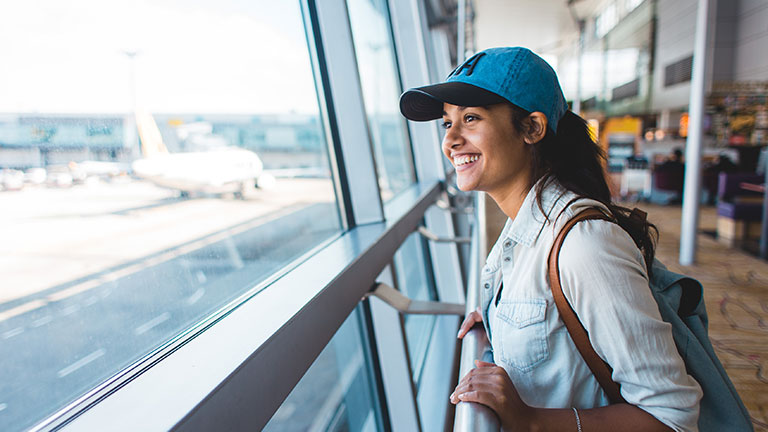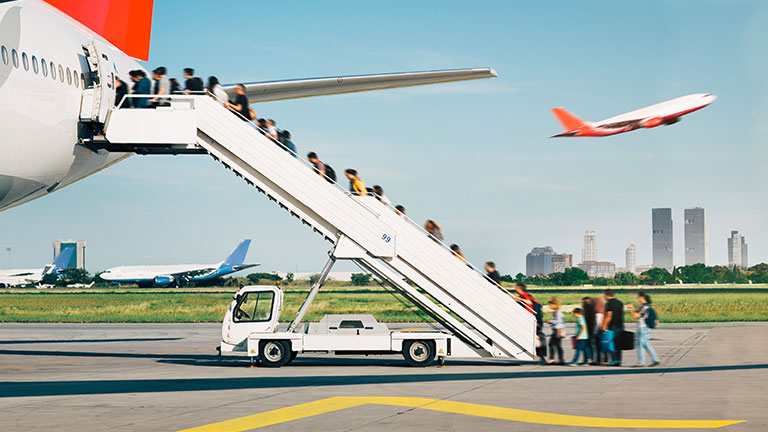
Regional airports can offer a welcome break from the chaos of major airports. With quieter terminals, shorter security lines, and easier parking and access, these smaller airports can make flying feel significantly less stressful. However, they also come with tradeoffs—most notably, the risk of travel delays. While not true across the board, smaller airports tend to be more vulnerable to disruptions. Here’s a closer look at the pros and cons of flying through regional airports.

The upside of regional airports
- Convenience reigns supreme
Typically located just outside major cities, smaller airports are often closer to home and far easier to navigate than their larger counterparts. Parking is usually simpler—and cheaper—and security lines tend to be short and move quickly. You can typically go from curb to gate in less than 30 minutes at a regional airport.
- Less stress, more comfort
Regional airports offer a calmer, more laid-back travel experience. You're not dodging luggage carts, elbowing through crowds, or racing down endless concourses to reach your gate. You probably won’t hear gate agents shouting final boarding calls over a chaotic sound system, either. It’s a more human experience, where airport staff often have time to offer more personalized assistance.
- Easier boarding, quicker exits
Smaller airports don’t use giant jets with countless boarding groups. You might even board via a staircase directly from the tarmac and be in the air within minutes. Upon arrival at a regional airport, your bag is often on the carousel by the time you reach baggage claim—something that can feel like a miracle at bigger airports, where long waits are the norm.

The downsides of regional airports
- Fewer flights, fewer options
The biggest drawback of regional airports is limited flight availability. Most serve only a few destinations, often with just one or two airlines, and may operate only a couple of flights per day. If your flight gets delayed or canceled, there might not be another flight until the next day. And while you may be able to start your trip at a convenient local airport, you’ll likely need to connect at a major hub to reach more distant or international destinations.
- Limited amenities
If you enjoy airport lounges, gourmet snacks, or even a last-minute magazine from a well-stocked newsstand, regional airports might disappoint. Many offer little more than a vending machine or a small snack counter. In some cases, TSA might not even open until shortly before the first flight, so early arrival doesn't always pay off.
- Weather and staffing can hit harder
Small airports tend to have fewer resources. A passing thunderstorm or drop in visibility can throw off the entire schedule. One sick crew member or a piece of broken equipment might impact multiple flights. And because there's often minimal staffing and no backup aircraft, delays can snowball. Some employees at regional airports are third-party contract workers, which can limit the airline’s ability to quickly respond to delays, rebook passengers, or coordinate logistics on the ground.

Why are regional airports prone to delays?
It’s not that regional airports are inefficient; it’s that they’re just more vulnerable. A single delayed arrival can cascade into a late departure. And with so few flights per day, there’s little slack to absorb disruptions that bigger airports can typically overcome.
Plus, regional airports are often subject to flow control by air traffic centers that prioritize busier airports. That means even in clear weather, a plane heading to a regional destination might be delayed to accommodate congestion elsewhere.
Still, this doesn’t tell the whole story. A 30-minute delay at a regional airport might still get you to your final destination faster than enduring a two-hour security line at a major hub. And for those flying out of smaller cities, it could be the most convenient—and most pleasant—option.

The bottom line
If your travel plans allow for flexibility and you don’t require a wealth of airport amenities, regional airports can offer a refreshingly smooth experience. They make travel feel simpler, more personal, and a little more like how flying used to be. Yes, there’s always a risk of a flight delay; but there’s also a chance for a surprisingly low-stress journey.
Next time you plan to fly, consider giving the little guys a good look.

